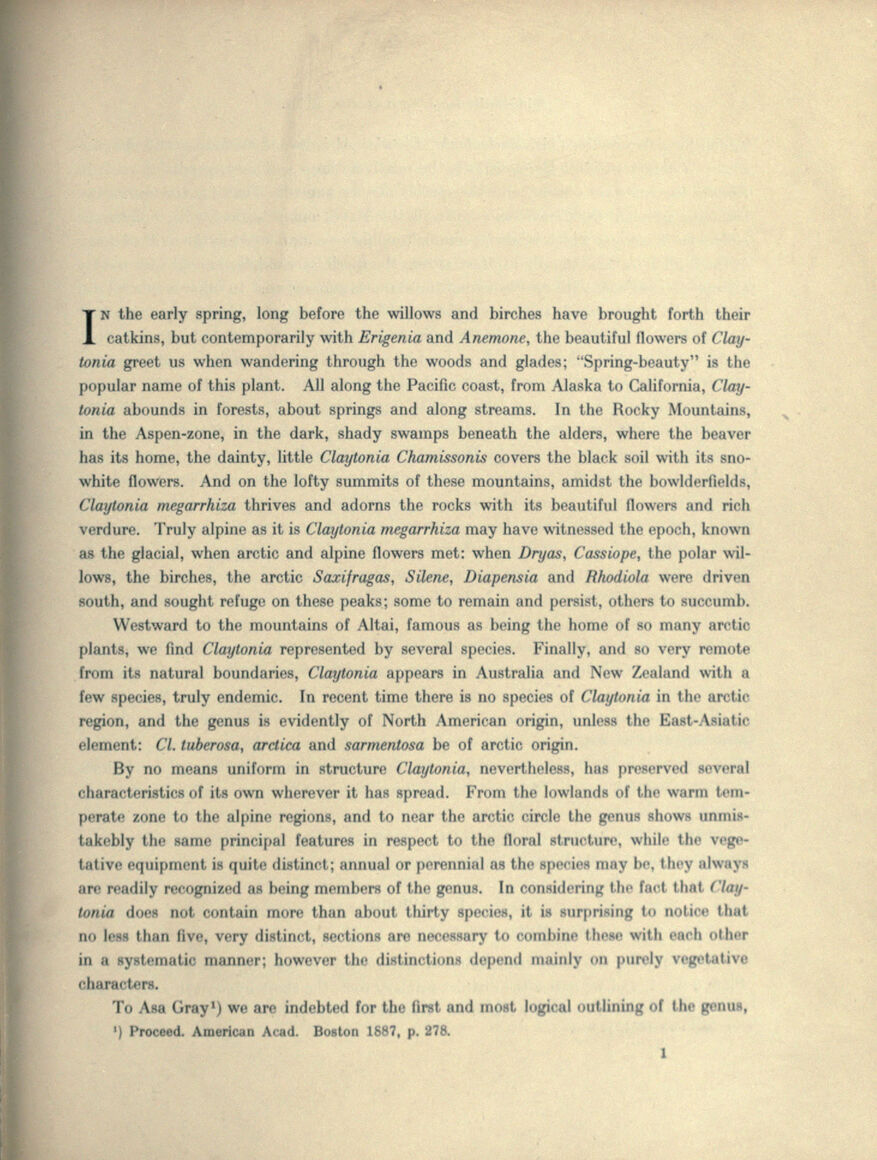
Full resolution (JPEG) - On this page / på denna sida - [Forword]

<< prev. page << föreg. sida << >> nästa sida >> next page >>
Below is the raw OCR text
from the above scanned image.
Do you see an error? Proofread the page now!
Här nedan syns maskintolkade texten från faksimilbilden ovan.
Ser du något fel? Korrekturläs sidan nu!
This page has been proofread at least once.
(diff)
(history)
Denna sida har korrekturlästs minst en gång.
(skillnad)
(historik)
In the early spring, long before the willows and birches have brought forth their
catkins, but contemporarily with Erigenia and Anemone, the beautiful flowers of
Claytonia greet us when wandering through the woods and glades; “Spring-beauty” is the
popular name of this plant. All along the Pacific coast, from Alaska to California,
Claytonia abounds in forests, about springs and along streams. In the Rocky Mountains,
in the Aspen-zone, in the dark, shady swamps beneath the alders, where the beaver
has its home, the dainty, little Claytonia Chamissonis covers the black soil with its
snowhite flowers. And on the lofty summits of these mountains, amidst the bowlderfields,
Claytonia megarrhiza thrives and adorns the rocks with its beautiful flowers and rich
verdure. Truly alpine as it is Claytonia megarrhiza may have witnessed the epoch, known
as the glacial, when arctic and alpine flowers met: when Dryas, Cassiope, the polar
willows, the birches, the arctic Saxifragas, Silene, Diapensia and Rhodiola were driven
south, and sought refuge on these peaks; some to remain and persist, others to succumb.
Westward to the mountains of Altai, famous as being the home of so many arctic
plants, we find Claytonia represented by several species. Finally, and so very remote
from its natural boundaries, Claytonia appears in Australia and New Zealand with a
few species, truly endemic. In recent time there is no species of Claytonia in the arctic
region, and the genus is evidently of North American origin, unless the East-Asiatic
element: Cl. tuberosa, arctica and sarmentosa be of arctic origin.
By no means uniform in structure Claytonia, nevertheless, has preserved several
characteristics of its own wherever it has spread. From the lowlands of the warm
temperate zone to the alpine regions, and to near the arctic circle the genus shows
unmistakebly the same principal features in respect to the floral structure, while the
vegetative equipment is quite distinct; annual or perennial as the species may be, they always
are readily recognized as being members of the genus. In considering the fact that
Claytonia does not contain more than about thirty species, it is surprising to notice that
no less than five, very distinct, sections are necessary to combine these with each other
in a systematic manner; however the distinctions depend mainly on purely vegetative
characters.
To Asa Gray[1] we are indebted for the first and most logical outlining of the genus,
<< prev. page << föreg. sida << >> nästa sida >> next page >>